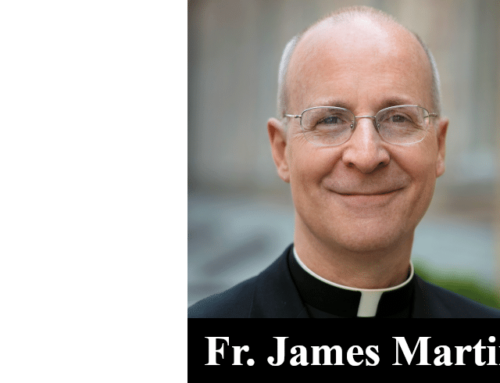The latest data show that a record number of Americans are committing suicide. Almost 50,000 killed themselves in 2022, up by 2.6 percent from the year before. We have a mental health crisis on our hands, but we are failing to address it properly.
A third of students have considered quitting in the last six months, citing mental health concerns. Among college students, two-thirds of bachelor’s degree students who have considered pausing their studies mention personal mental health reasons, such as emotional stress.
So what are colleges doing about it? What is the government doing about it? We know what to do but we refuse to do it.
We have known for a long time that those who take their religion seriously are the least likely to suffer a mental health crisis. Conversely, the more secular the person is, the more likely he is to have such a problem. But given the prevailing anti-religious climate on campuses, and the proverbial government aversion to religion, those who are suffering are being ill-advised. If they are lucky, they’re told to get a therapy dog.
Harvard School of Public Health reported in 2020 that women who attend weekly religious services are 68 percent less likely to die “deaths of despair”—suicide, drug overdose and alcohol poisoning—than others; men are 33 percent less likely.
As I reported in my 2015 book, The Catholic Advantage: Why Health, Happiness and Heaven Await the Faithful, those who regularly practice their religion are much more likely to be healthy, physically and psychologically, than secularists. They are also more likely to be happy. Importantly, given that they are more likely to exhibit altruistic tendencies, chances are they have a leg up getting into heaven.
Unfortunately, the number of Americans who identify with a religion is lower now than ever before. Approximately 30 percent answer “none” when asked what their religious affiliation is (they are the so-called nones). This alone explains why millions of these people continue to suffer mental health problems, having nowhere to turn (save for Fido) for relief.
Worse, when they seek relief, the therapists are not likely to encourage them to rethink their religious status. For example, the least religious of all professors are psychologists: 50 percent report being an atheist and 11 percent identify as agnostic. In short, they are more likely to be a liability than an asset.
No organization that deals with suicide is more clueless in dealing with it than the Centers for Disease Control and Prevention (CDC). In its section on “Risk and Protective Factors,” it lists all kind of things—from chronic pain to criminal problems—but not a word about eschewing religion. Similarly, it addresses ways to protect against suicide risk, but never lists religion as a resource.
In the section “Prevention Strategies” it mentions “Provide for therapeutic approaches,” but has not a word to say about anything resembling a religious-based program.
Not only is the CDC afraid to mention how religiosity (religious beliefs and practices) affects our mental health, much of its advice is politically skewed.
The CDC reports that the largest increase in suicide, 8.1 percent, was among those 65 or over. Also, men are 50 percent of the population but makeup nearly 80 percent of suicides: their rate is four times higher than the rate among females. Men who are 75 and over have the highest suicide rate of any age group in the country. Moreover, non-Hispanic white men have the highest suicide rate compared to other racial and ethnic groups.
Hardly a day goes by without some news story reporting that “people of color” and women have higher rates of illness from one condition or another than white men—and we must act now to help them!—but when white men are committing suicide at a higher rate than anyone else, no one is there to plead their case. This is a national disgrace.
The kinds of jobs men have explains it all. Those who work in mining, quarrying, and oil and gas extraction have the highest suicide rate, followed by those who work in construction, other services (e.g., automotive repair), agriculture, forestry, fishing and hunting, transportation and warehousing.
How can it be, then, that the CDC attributes suicide and suicidal behavior to such problems as racism and discrimination? Their own data show that white men have the highest suicide rate. In fact, the only ones witnessing a decrease in suicide are American Indian/Alaska Native people.
This is so typical of the liberal establishment—they see racism everywhere, even in instances that are contradicted by the data. Evidence doesn’t matter—politics does.
If we were serious about suicide we wouldn’t treat religion as if it were a problem. It’s an elixir.
It needs to be said, however, that we shouldn’t recommend a relationship with God for purely health reasons. If religion isn’t taken seriously, it belittles its meaning. Religion should not be used simply as a tonic, but we should also not shy away from touting its many benefits.







